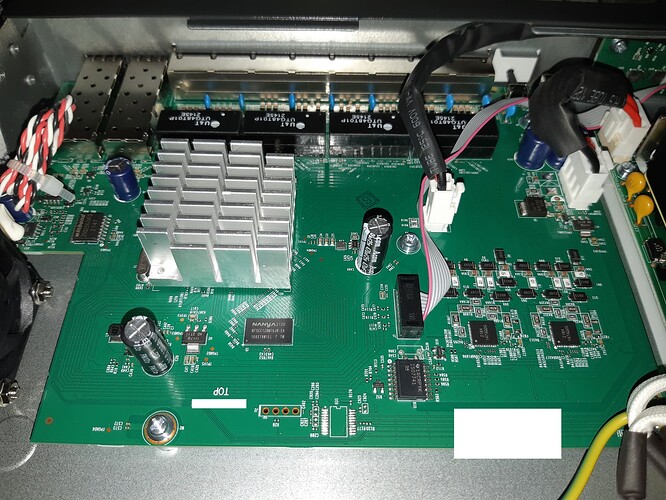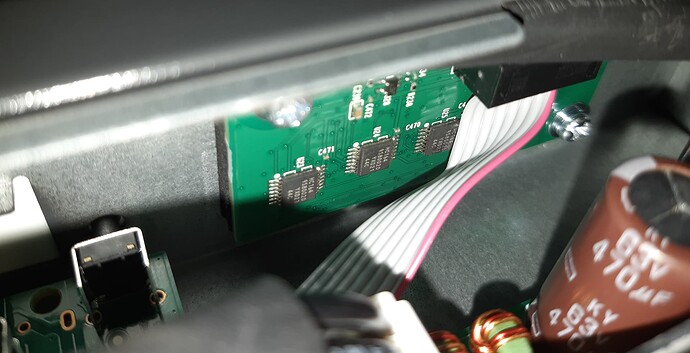Maybe better make it @I2C addr
Just don't connect them to different busses and same address.
That is why busnr-addr is usually used
Why reinvent the wheel when hwmon-N is guaranteed to be unique, and potentially clearer from a user perspective? I know I get my voltage from /sys/class/hwmonN/. What's that in bus-addr?
No need, I am fine with whatever
Interesting - currently, there is only the framework needing extension for 802.3af and at support as it seems.
@mrnuke I'd be glad if you fixed the debugfs thing. I'll clean up the power enable code next week and send it upstream.
Yeah, its just basic PoDL
Hey @Timeless
so that's pretty sneaky. I contacted gpl@tp-link.com and asked them to put up various links. They did, I did not however realize they made it so that it's region bound! That's so crappy, but at least now I realize why they asked me where I was from.
I asked for GPL sources for the SG2008p V6 (it was missing) to which they replied 'this is only for US market'. I kindly repsonded that the GPL applies world-wide, so they informed the web-admin. Big fat sigh.
I also requested sources for the ST-5008f (which should be a rtl93xx based device, so very interested int he GPL dump) but they've sent me to TP-Link China, saying 'this is only a chinese devices' sigh.
I have not tried to compile the TP-Link SDK yet, I probably want to get the bootloader compiled (with removed RTL shell) at some point, but first need to aquire an RTL83xx hardware. I know from the 'normal'/XyXEL sdk, that you first need to run make rtl9300 (probably 8380 see defConf.mk in this readme.)
On my list was exactly that switch, the TL-SG2210MP as well, but was hesitant without some inside fotos (only want to buy it if it uses the TI chips). @timeless can you upload some pictures here? That would be much appreciated!
For development, I built TP-Link's U-Boot from source and flashed it using an SOIC-16 clip to the device.
do you have a 'quick list' what you did to make that happen? I can re-figure it out ![]() but usually these vendor instructions are far from ideal. Took me a day or so to get the ZyXEL u-boot compiled due to tons of weirdness.
but usually these vendor instructions are far from ideal. Took me a day or so to get the ZyXEL u-boot compiled due to tons of weirdness.
That was pretty easy and the instructions are on the Wiki: https://svanheule.net/switches/t1600g-52ps#compiling_a_new_bootloader
Gpl is one thing, export laws is another and export laws wins over gpl.
Great to know that there are more people interested in this switch!
@timeless can you upload some pictures here? That would be much appreciated!
Sure, I try to make some picture sometime this week.
only want to buy it if it uses the TI chips
Which TI chip are you looking for?
I heard mentions of a TL-SG2008P. If you're going to re-flash the bootloader on that, you might need to make sure the code that disables the external watchdog is enabled:
- define
CONFIG_OS_8G_60Winarch/mips/cpu/mips4kec/rtl838x/soc_init.S
Otherwise you'll just bootloop.
@timeless can you upload some pictures here?
Pictures of the TP-Link SG2210MP v3:
The main PCB
There are 4 driver chips controlling the LED's (1 is behind the cable)
This doesn't look like Ti PoE controllers which I assume @olliver is looking for. A quick web search returned nothing for the chip markings, but I'm not sure if I've read them correctly:
2184
147AQ0G
They do seem to be directly connected to the SoC, similar to the TPS23861 ones in my SG2452P.
Found the XS2184, also used in the TP-Link RTL-switch: https://www.acwifi.net/21706.html
EDIT: hard to find any info on this thing. This is interesting, but none of the links work (for me):
There is a chinese datasheet, but its really short:
2109021730_chipup-XS2184_C2890400.pdf
781.48 KB
Gpl is one thing, export laws is another and export laws wins over gpl.
But what are you trying to say? That we won't get GPL sources because of export laws?
There is a chinese datasheet, but its really short:
Lets see if google-translate can make it work; else I'll ask some friends for a translation ![]()
But it doens't have to be big or complicated, in the end, its a simple switch with a handful of registers, probably not that dissimilar from the TI ones. But sucks that they are using different chips ![]()
Thats the thing, I dont see any registers being documented

